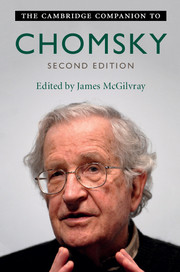Book contents
- The Cambridge Companion to Chomsky
- The Cambridge Companion to Chomsky
- Copyright page
- Dedication
- Contents
- Figures
- Contributors
- Introduction
- Part I The Science of Language: Recent Change and Progress
- Part II The Human Mind and Its Study
- Part III Chomsky on Politics and Economics
- 12 Critique and Hope: The Moral Basis of Chomsky’s Political Economy
- 13 The Propaganda Model and Manufacturing Consent: U.S. Public Compliance and Resistance
- 14 Chomsky Listens: Latin America and the Ethics of Solidarity
- 15 Noam Chomsky and the Question of Palestine/Israel: Bearing Witness
- Index
- References
13 - The Propaganda Model and Manufacturing Consent: U.S. Public Compliance and Resistance
from Part III - Chomsky on Politics and Economics
Published online by Cambridge University Press: 13 July 2017
- The Cambridge Companion to Chomsky
- The Cambridge Companion to Chomsky
- Copyright page
- Dedication
- Contents
- Figures
- Contributors
- Introduction
- Part I The Science of Language: Recent Change and Progress
- Part II The Human Mind and Its Study
- Part III Chomsky on Politics and Economics
- 12 Critique and Hope: The Moral Basis of Chomsky’s Political Economy
- 13 The Propaganda Model and Manufacturing Consent: U.S. Public Compliance and Resistance
- 14 Chomsky Listens: Latin America and the Ethics of Solidarity
- 15 Noam Chomsky and the Question of Palestine/Israel: Bearing Witness
- Index
- References
- Type
- Chapter
- Information
- The Cambridge Companion to Chomsky , pp. 275 - 294Publisher: Cambridge University PressPrint publication year: 2017
References
- 1
- Cited by

